- Home
- Parnell Hall
10 Movie Page 2
10 Movie Read online
Page 2
If you’re not in the movie business, preproduction is the time just before principal photography. If you’re in preproduction, it means your movie is a go project, you have a start date, you’re about to film the movie, and you’re setting up everything necessary for doing so. Preproduction can take anywhere from two to six months, and on some big-budget pictures can take as much as two years.
Preproduction for our movie was scheduled for three weeks. There was a reason for this. The reason was, we were a low-budget picture, and during preproduction some people are on salary.
No, not me.
In our case, the people on salary included the production manager, the director of photography, the gaffer, the first assistant director, the art director, the sound mixer, and four teamsters.
The production manager was there to hire the crew, negotiate with the unions, approve all purchases and equipment rental, and work out the shooting schedule.
The assistant director was there to scout locations for filming.
The director of photography was there to plan camera angles and lighting.
The gaffer, or head electrician, was there to see that all locations had sufficient power to shoot.
The art director was there to see what needed to be designed and built.
The sound mixer was there to make sure no locations had any sound problems.
The teamsters were there because no one had the guts to tell them they weren’t needed. Which was not that unusual. Teamsters are the backbone of the movie industry. They are to be treated with utmost respect, because if they are not happy, they won’t move their fucking trucks. And if the teamsters strike, no union will cross their picket line, which means you can’t shoot. So we had four teamsters on salary, even though we couldn’t possibly need a truck for weeks. They drove in from Long Island each day, and hung out in the office playing cards.
I guess I wouldn’t have resented this so much if it weren’t for the fact that they were on salary and I wasn’t, and I was working very hard on this movie while still working full time for Rosenberg and Stone.
Anyway, we were in preproduction and I was in a project in Harlem signing up Darnell Coles, who had fallen in a subway and broken his leg, when my beeper went off. I called the office and got either Wendy or Janet, one of Richard Rosenberg’s two switchboard girls, who happened to have identical voices. Whichever it was, I was glad she’d beeped me. It was a slow day, and I could use another assignment.
Only there wasn’t one.
“Oh, Stanley,” Wendy/Janet said. “That was quick. Glad I caught you. You’re in Harlem, right?”
“Yeah. Darnell Coles. I’m there now.”
“Good. Your producer called.”
“What?”
“That’s right. Sidney Garfellow. They’re doing a location scout in Harlem and they want you to check out a set.”
“What?”
“That’s right. Hang on and I’ll give you the address.”
She did. A warehouse on West 138th, not ten blocks from where I was.
I drove there shaking my head. Unbelievable, the power of the motion-picture industry. Anybody else, Wendy/Janet would have told them to get lost. “He’s workin’ for Rosenberg and Stone, buddy. Who the hell are you?” But Sidney Motion-Picture Garfellow calls, and they fall all over themselves to cooperate.
I had the sudden paranoid flash that if there had been an assignment for me, Wendy/Janet would have withheld it or given it to some other investigator, just to accommodate Sidney Garfellow. So I was in a foul mood driving over there.
I was also in a foul mood because when I got to the warehouse there was no one there. Just a big empty warehouse with a big chain and padlock on the front door. The chain and padlock were conclusive—unless there was another entrance I didn’t know about, no one was inside.
Which did not bode well. See, besides their voices, Wendy and Janet also shared an amazing propensity for inaccuracy. So there was no way for me to tell if this was even the right warehouse.
It was.
The crew came tooling up a half hour later in a Ford station wagon driven as usual by a twenty-year-old production assistant. They could have had a teamster drive, since there were four on the payroll, but then they would have been subject to his whim. Whereas, the twenty-year-old kid, desperate to please, did whatever he was told.
The crew piled out of the car.
Though I had met him before, I was always somewhat awed by Jake Decker, the production manager. He stood six-foot-six, two hundred and seventy pounds, all muscle. He had curly dark hair, a full black beard, and the most hostile eyes you ever saw. His forte was negotiation, and his speciality was squeezing concessions out of unions. His success rate was phenomenal—people just didn’t want to deal with him.
Next was the director of photography, Eric Stoltz, a small, wizened, wiry German, with an accent so thick I could never understand a word he said. He was reputedly brilliant, though, at least according to Sidney Garfellow. Sidney was evasive as to his credits, however, and when I asked around the industry, most of my friends had never heard of him, except for one writer who thought he might have been involved in, of all things, a spaghetti western.
Next was our first assistant director, who happened to be a rather attractive woman. So much so that I had to wonder why she’d been hired. Was it because Sidney Garfellow had the hots for her, or did she just happen to be the best available person for the job?
Then there was the gaffer, a middle-aged man with a wart on his nose and a chip on his shoulder. The wart was the type that was prominent enough you wondered why the hell the guy didn’t take it off. The chip on his shoulder was due to the fact that as the head electrician he felt he didn’t get as much respect as the DP. In this presumption he was absolutely correct. The director of photography is the artist who designs the lighting of the set—the gaffer is the functionary who carries it out. The only odd thing about his attitude was, he’d either been sitting on it for twenty to thirty years or else it had taken him that long to work it out.
Next up was the artistic director, a tall, thin black man with a high wide forehead and a smaller nose than Michael Jackson. If I had to describe the man in one phrase, it would be perfectly pleased. He seemed perfectly pleased with his lot as artistic director, and perfectly pleased with everything else with which he came in contact. His favorite expression was, “This will do nicely.”
Last, but not least, was the sound man, Murky Doyle. I’m generally terrible with names, but his I remembered because there was a story that went with it. His real name was Vincent, but he’d been dubbed Murky as a comment on the quality of his sound recordings. The joke of the industry was that Murky had embraced the nickname gladly, thinking people were kidding, when in fact they were dead serious.
It was a good thing he had, because aside from that, Murky was a downright unpleasant fellow. As much as the art director was sweet, Murky was sour. He complained bitterly about everything, perhaps as a defense mechanism to prepare people for the dismal quality of his sound recording.
Anyhow, when Sidney Garfellow and the gang emerged from the station wagon, it was somewhat like clowns getting out of a circus car.
Sidney looked around and spotted me. “Stanley. There you are. Good. We wanted you here, but we didn’t want to wait for you. Time’s money and we can’t afford to wait.”
Since I’d beaten them there by a good half hour, that didn’t make any sense at all, but one doesn’t argue with a producer. I said nothing, waited for Sidney’s attention to shift to something else.
Which it immediately did. “Good god, it’s locked,” he said, pointing to the warehouse door. “Why is it locked? Why isn’t someone here to open up for us?”
“I have the keys,” the production manager said. He held them up, jingled them in front of Sidney Garfellow. The action and attitude seemed to convey the fact that, in Sidney’s case, a simple, bald statement would not suffice, and one would be smart to resort to visual
aids. In this judgment, he was probably correct.
“Well, fine,” Sidney said. “That’s all well and good. But who’s going to show us around?”
“I am,” the production manager said. Jake Decker. The other name I could remember.
“You’ve seen it before?”
“No, but I discussed it on the phone.”
“They should have sent someone.”
“I didn’t want them to.”
“Why?”
“It would have cost us money.”
“Money? Nonsense. We’re renting the place. They want to show it off.”
“In the negotiation, I mean,” Jake said evenly. “I’ll do better in the negotiation if we make our own independent investigation without their representative present. I’ll be able to claim things are poor, even if some of these bozos say they’re good.”
“Who are you calling bozos?” the sound man demanded.
“Not you, Murky,” Jake said. “We know you’re not gonna think it’s good.”
“Can we get on with it?” the gaffer said. “I got a union meeting.”
Jake Decker looked at him. “When?”
The gaffer stuck out his chin. “What’s it to do with you?”
“You’re on the payroll today. You telling me you’re going to a union meeting instead?”
The gaffer’s chin extended even more. Then drew back. “No, later tonight.”
“Then no big deal,” Jake said. “Come on. Let’s look at the place.”
He unlocked the padlock, took off the chain. The door itself was also locked. In fact, twice, with a regular lock and a police lock. Jake unlocked those, slid the door wide.
We walked into what appeared to be a large, dark room.
“Any lights in this place?” Sidney Garfellow said.
“There must be,” Jake said. He fumbled on the wall. “No, not here.”
“Great. No lights,” Sidney said. He managed to give the impression it was a personal affront.
“There’s gotta be lights.”
Sidney laughed. “Great, great. I got a DP and a gaffer here, you’d think someone could turn on the lights.”
There was a click and the lights went on.
“Got ’em,” cried a triumphant voice. It was the young production assistant, who looked absolutely thrilled at having been able to help.
He got no thanks for it. Sidney Garfellow turned to the gorgeous assistant director, whispered, “What’s his name?”
“Dan.”
“Dan,” he said, “what are you doing here? You’re supposed to be with the car.”
“I found a spot.”
Sidney shook his head. “You can’t leave the car in this neighborhood. It’ll be stolen. Go back and wait in the car.”
Dan had sandy red hair and freckles and wide, eager eyes. His spirits were obviously dampened, but he wasn’t about to argue with the producer. “Yes, sir,” he said. “Don’t worry about a thing.” He went out the door.
“All right,” Sidney said. “What have we got here?”
What we had was a large empty space with a cement floor and a twenty-foot ceiling.
“Okay,” Sidney said. “And this is for what? Our sound stage, right?”
Jake shook his head. “No, sir.”
“Why not? It’s perfect. Wide open, high ceiling.”
“Yeah, but cement floor. You can’t hammer into it.” Jake jerked his thumb. “Upstairs, I’m told, same setup, but the floor’s wood.”
“Sounds good,” the art director said.
“Yeah, but second floor,” Sidney said. “What about getting the stuff up there?”
Jake jerked his thumb again. “Freight elevator on the other end. We can check it out, but I’m told it’s huge.”
“How do we get up there?”
“Stairs in the corner.”
We filed up the stairs to another dark floor and played the game of find-the-light-switch. Without Dan, it took a little longer, with a lot of cursing and thumping and bumbling around, and once the attractive AD said, “Do that again, so help me,” and a voice that sounded like the gaffer’s grunted, “Sorry,” but eventually the lights came on.
Revealing exactly what Jake Decker had predicted. A huge space, similar to that downstairs, except with a wooden floor.
“This will do nicely,” the art director said.
The production manager looked around critically before declaring, “Yeah, this should be fine.”
“Fine for you,” Murky said. “You hear how you sound? I mean, Jesus Christ, do you just hear how you sound?”
It occurred to me to wonder if Murky ever heard how he sounded. The acoustics seemed perfectly good to me, but then what did I know?
My attention was captured by a loud, peremptory voice saying, “Stanley.”
I didn’t have to guess who that was. “Yes, Sidney?”
I turned and found him pointing to a far corner of the loft where huge cartons were stacked. Some of them were rectangular, but others were tall cylinders.
“Stanley,” Sidney said. “Whaddya think. Wouldn’t this be perfect for the big warehouse fight?”
I blinked. “Sidney, there is no warehouse fight.”
“Yeah, but there could be. And this would be perfect for it. Those boxes and cylinders. We could move ’em around. Shoot wonderful angles going in and out.”
“Sidney—”
“I don’t expect you to do it now. Think it out tonight, let me see it tomorrow.”
The DP stuck his nose in. “Sidney, a major fight sequence is going to be tough to light,” he said. At least that’s what I deduce he said from Sidney Garfellow’s answer. With his thick German accent, I couldn’t catch a word. Apparently, Sidney could. If so, it was just another indication of the man’s genius.
Anyway, Sidney said, “Are you telling me you can’t light a fight scene?”
The DP told Sidney Garfellow either that he could light a fight scene but it would take time, or that his shorts were on too tight.
Sidney turned to me and said, “It’s no problem. Write it, Stanley. Write it. I’ll look at it tomorrow.”
I’m glad it was no problem for him. From my point of view, I couldn’t imagine where in the script I was going to cram a warehouse fight. I knew if I asked Sidney, he would respond, as he always did when faced with a tough logistics problem, “You’re the writer,” as if that were some sainted profession on which he dared not intrude. Of course, once I had written it, it would turn out I was only the writer, and what the hell did I know?
Do I sound cynical? Get a screenplay produced sometime.
The gaffer broke in about then, complaining that there weren’t enough outlets on the floor, and he’d have to run power up from downstairs. That didn’t seem like that huge an imposition—it was what he’d been hired for—but the guy had a lot to say on the subject, which ended the script conference.
The discussion of how to get power upstairs segued into a discussion of how to get equipment upstairs, which led to a search for the freight elevator. It was discovered in the back corner of the side wall, which led to a fresh round of speculation and griping: Did it open onto the side alley? If so, was there room in there to turn the trucks around? Could you back up and unload flush, or did you have to do it catty-corner? Was the elevator wide enough, deep enough, high enough, and did the damn thing even work?
It did.
The production manager located a huge button on the wall and pressed it, and with a clang that could have been heard from the Bronx to Brooklyn, the elevator lurched into motion. There came the sound of huge chains clanking through gears and pulleys, as the elevator descended from some higher floor.
As we watched, the floor of the elevator came into view some twenty feet above, visible through the floor-to-ceiling steel-mesh door. When the elevator reached our floor and stopped with a mighty thoomb, the steel-mesh door split in two halfway up, the top ten feet rising up into the ceiling, the bottom ten sinking into the floo
r, and we surged forward to inspect the interior of the freight elevator.
It was almost perfect. It was huge—high, wide, and deep. You could load anything you wanted onto it and bring it upstairs. Hell, you could drive the truck itself on it and bring it upstairs, if you wanted to. Even the grumpiest crew member alive would be hard pressed to complain. The elevator was all they could have asked for.
The only possible drawback was the dead body lying in the middle of the floor.
3.
“YOU REALLY PISS ME OFF,” MacAullif said.
“Oh, yeah? Then why are you here?”
Sergeant MacAullif was here—in the warehouse with the dead body—because I’d called him up and asked him to come. I’d done it because we were a movie crew and I didn’t want the situation to get out of hand. It’s tough enough shooting movies in New York City. Industry loves it, but residents don’t. Movie crews are disruptive—they take up parking spaces and block streets, intrude on the daily routine. They also generate a lot of publicity, the wrong type of which can make a lot of people’s lives miserable. Still, the city wants them there because the city’s damn near bankrupt, and needs the money.
So calling MacAullif was sort of in the nature of a gesture—the shit’s hit the fan, is there anything you’d like to do in terms of damage control?
To my surprise, there was. MacAullif told me to skip 911, he’d handle it himself.
Which he had. The medical examiner had arrived, the crime-scene unit was going over the elevator, and MacAullif was here in person. To debrief the movie crew and send them on their way.
Or so I hoped.
“What do you mean, why am I here? You called me, schmuck.”
“Yes. And I know you jump when I call.”
“Fuck you.”
“That’s not an answer.”
“It’s as good as any.”
We were in the far corner of the warehouse. MacAullif jerked his thumb at the other side, where a couple of officers were riding herd on the crew. “And these jokers here—these are all technical people?”
“That’s right.”
“The tall guy with the curly hair—the one who wouldn’t shut up when I came in—that’s this whiz-kid producer-director?”

 Clicker Training
Clicker Training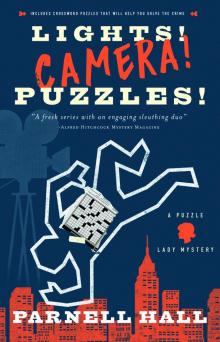 Lights! Camera! Puzzles!
Lights! Camera! Puzzles!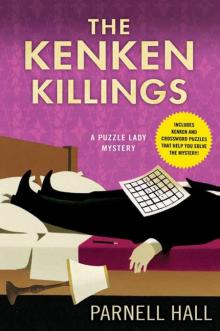 The KenKen Killings
The KenKen Killings 12-Scam
12-Scam The Puzzle Lady vs. the Sudoku Lady
The Puzzle Lady vs. the Sudoku Lady 2 Murder
2 Murder 7 Shot
7 Shot You Have the Right to Remain Puzzled
You Have the Right to Remain Puzzled Puzzled to Death
Puzzled to Death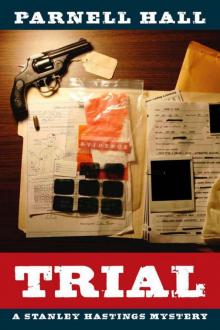 11-Trial
11-Trial The Witness Cat (Steve Winslow Mystery)
The Witness Cat (Steve Winslow Mystery) With This Puzzle, I Thee Kill
With This Puzzle, I Thee Kill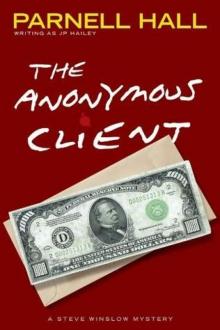 The Anonymous Client sw-2
The Anonymous Client sw-2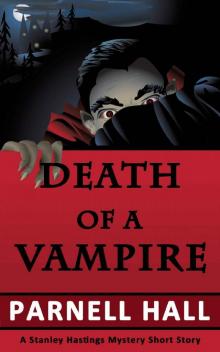 Death of a Vampire (Stanley Hastings Mystery, A Short Story)
Death of a Vampire (Stanley Hastings Mystery, A Short Story) The Wrong Gun sw-5
The Wrong Gun sw-5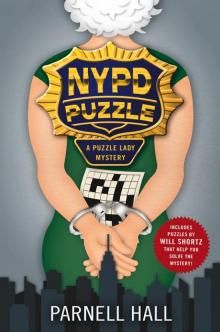 NYPD Puzzle
NYPD Puzzle 6 Juror
6 Juror 07-Shot
07-Shot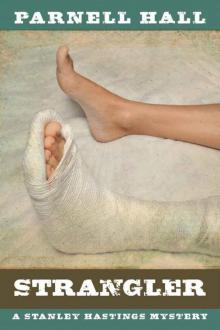 04-Strangler
04-Strangler 02-Murder
02-Murder SW04 - The Naked Typist
SW04 - The Naked Typist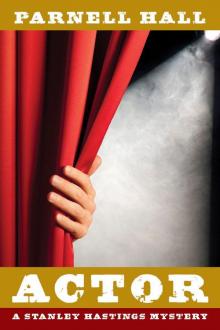 Actor
Actor The Naked Typist sw-4
The Naked Typist sw-4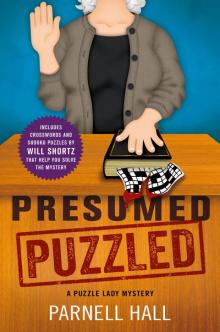 Presumed Puzzled
Presumed Puzzled SW01 - The Baxter Trust
SW01 - The Baxter Trust SW06 - The Innocent Woman
SW06 - The Innocent Woman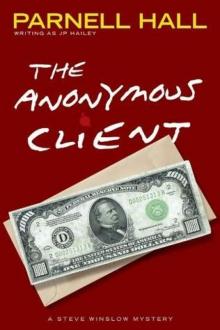 SW02 - The Anonymous Client
SW02 - The Anonymous Client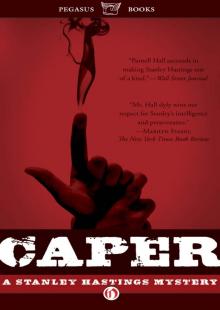 Caper
Caper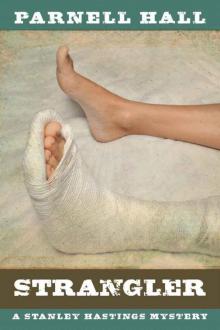 4 Strangler
4 Strangler The Underground Man sw-3
The Underground Man sw-3 Manslaughter (Stanley Hastings Mystery, #15)
Manslaughter (Stanley Hastings Mystery, #15) A Puzzle to Be Named Later--A Puzzle Lady Mystery
A Puzzle to Be Named Later--A Puzzle Lady Mystery 05-Client
05-Client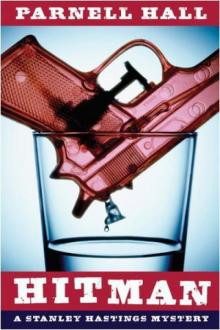 16 Hitman
16 Hitman SW05 - The Wrong Gun
SW05 - The Wrong Gun 3 Favor
3 Favor Last Puzzle & Testament
Last Puzzle & Testament The Purloined Puzzle
The Purloined Puzzle 03-Favor
03-Favor SW03 -The Underground Man
SW03 -The Underground Man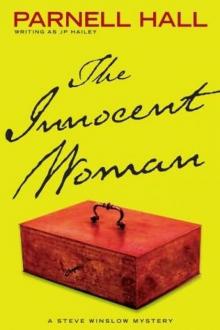 The Innocent Woman sw-6
The Innocent Woman sw-6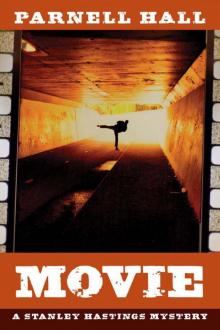 10 Movie
10 Movie 06-Juror
06-Juror Puzzled Indemnity
Puzzled Indemnity Arsenic and Old Puzzles
Arsenic and Old Puzzles Dead Man's Puzzle
Dead Man's Puzzle Safari
Safari $10,000 in Small, Unmarked Puzzles
$10,000 in Small, Unmarked Puzzles The Baxter Trust sw-1
The Baxter Trust sw-1 5 Client
5 Client Cozy (Stanley Hastings Mystery, #14)
Cozy (Stanley Hastings Mystery, #14) Blackmail
Blackmail A Puzzle in a Pear Tree
A Puzzle in a Pear Tree A Clue for the Puzzle Lady
A Clue for the Puzzle Lady Clicker Training (Stanley Hastings Mystery, A Short Story)
Clicker Training (Stanley Hastings Mystery, A Short Story)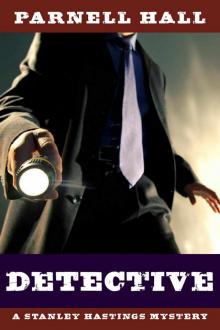 Detective (Stanley Hastings Mystery Book 1)
Detective (Stanley Hastings Mystery Book 1)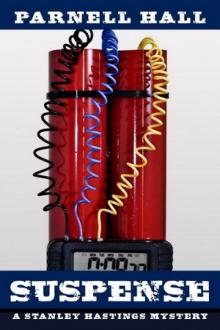 13 Suspense
13 Suspense